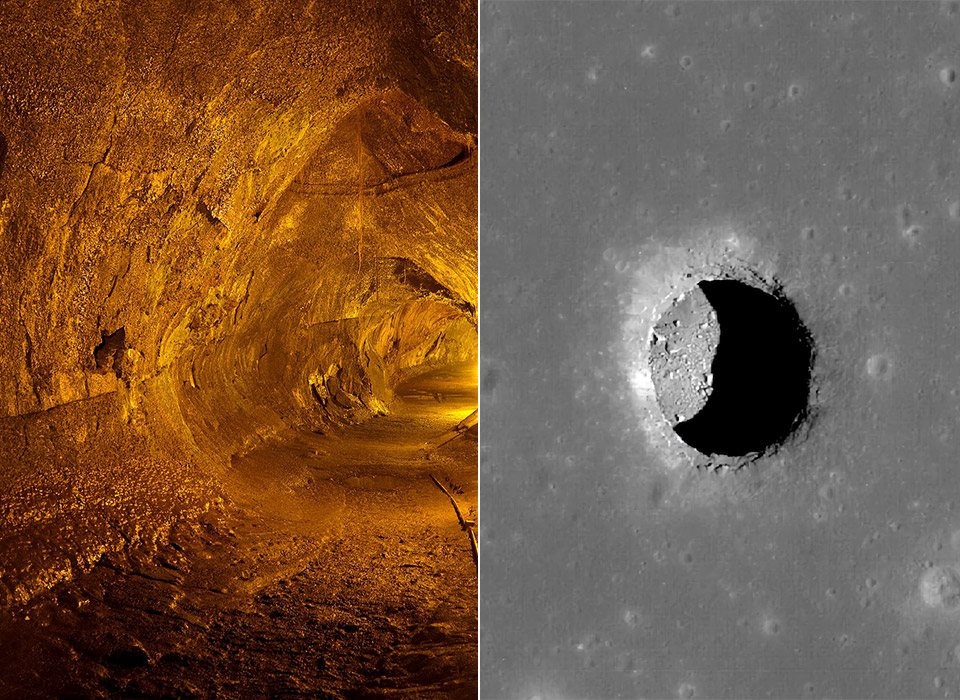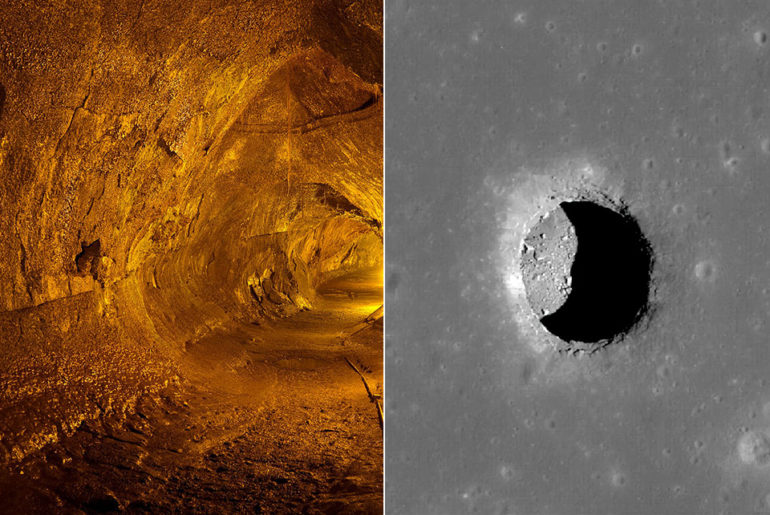
Photo credit: Frank Schulenberg/Creative Commons
UCLA scientists have uncovered moon caves that could be used as shelter year-round by future astronauts. These lunar pits maintain a comfortable 63-degrees Fahrenheit all day and could actually be a more thermally stable base camp for lunar exploration instead of the proposed 3D-printed habitats, especially since the moon’s surface heats up to 260 degrees during the day and drops to 280 degrees below zero at night.
So far, approximately 16 of the over 200 lunar pits are most likely collapsed lava tubes, with two of the most prominent having visible overhangs that lead to some sort of cave or void. This means that building lunar bases in the shadowed parts of these pits could possible let scientists focus on other challenges, such as growing food. These lunar pits or caves would also provide protection from cosmic rays, solar radiation and micrometeorites. Speaking caves, this teenager from Spain decided to dig a man cave in his own backyard.
- Detailed Lunar Replica - Features a detailed Eagle lunar lander replica with lunar surface, crater, footprints, and U.S. flag for a realistic space...
- Realistic Modular Model - This modular set includes a descent stage with gold-colored landing pads, panels, opening camera, laser hatches, and movable...
- Ascent Stage Interior - The ascent stage boasts a detailed interior with room for 2 astronaut minifigures, finished with an Apollo 11 Lunar Lander...

Humans evolved living in caves, and to caves we might return when we live on the moon. Because nobody else had looked at things this small with Diviner, we found that it had a bit of double vision, causing all of our maps to a be a bit blurry,” said David Paige, UCLA professor of planetary science.






